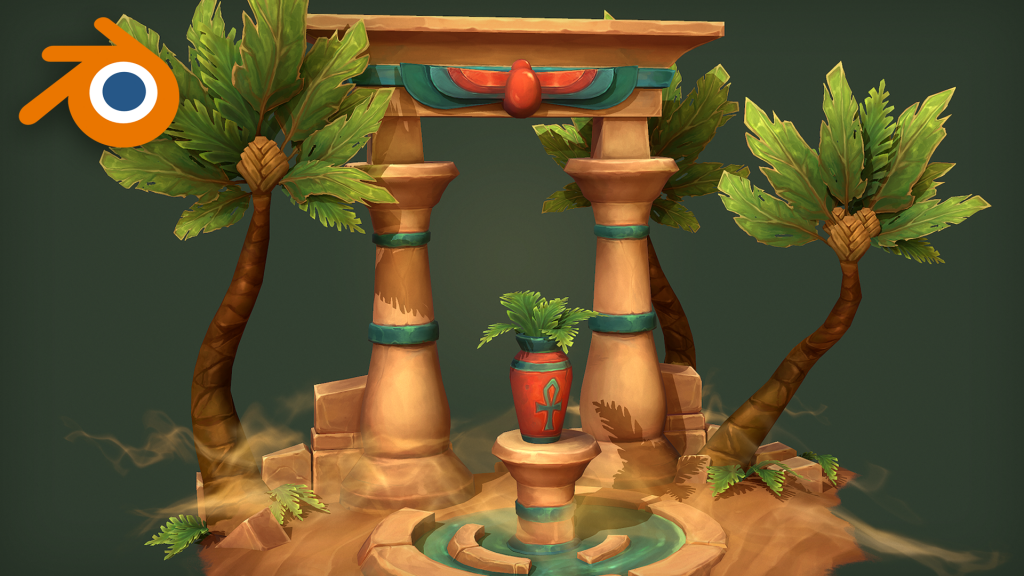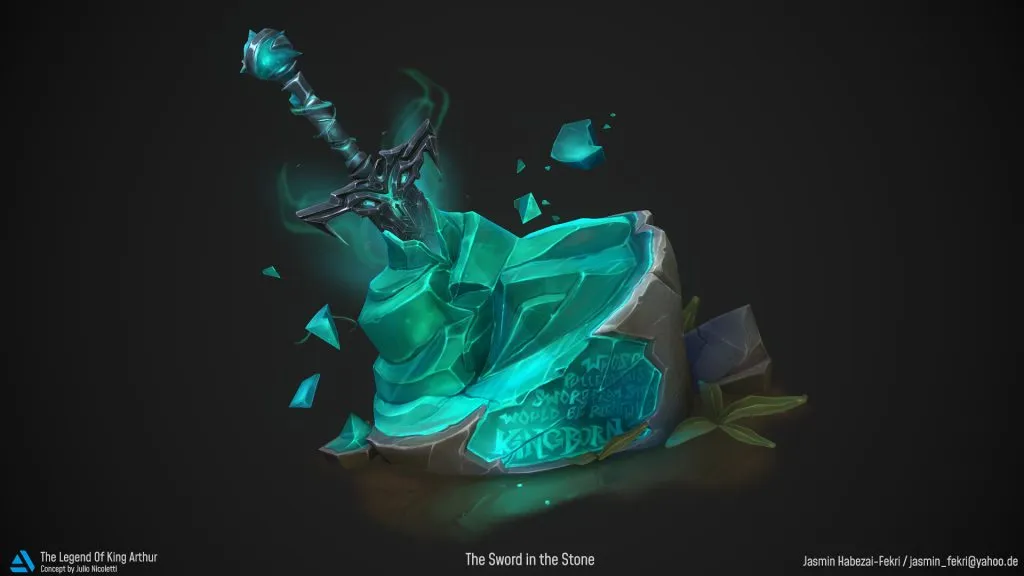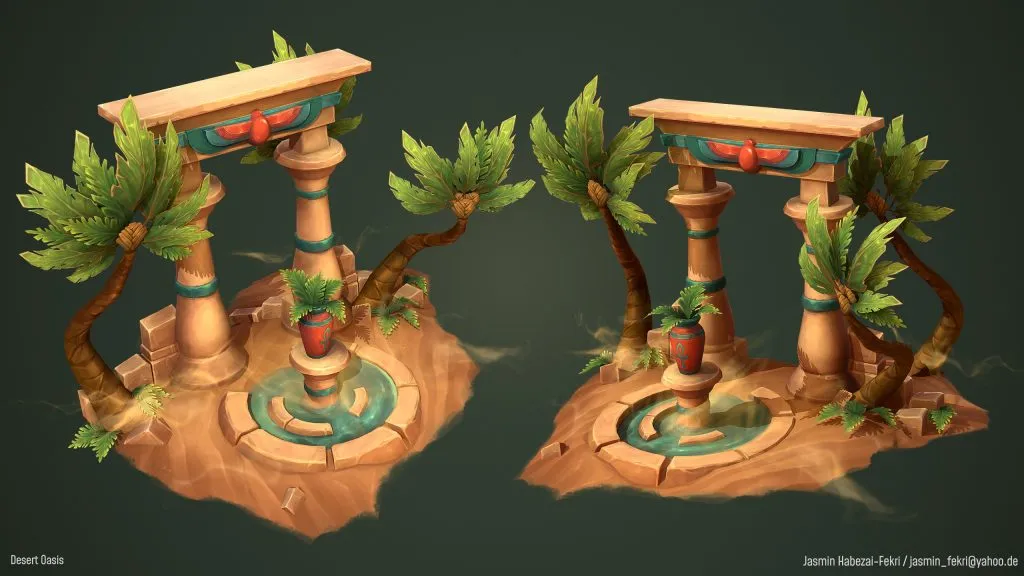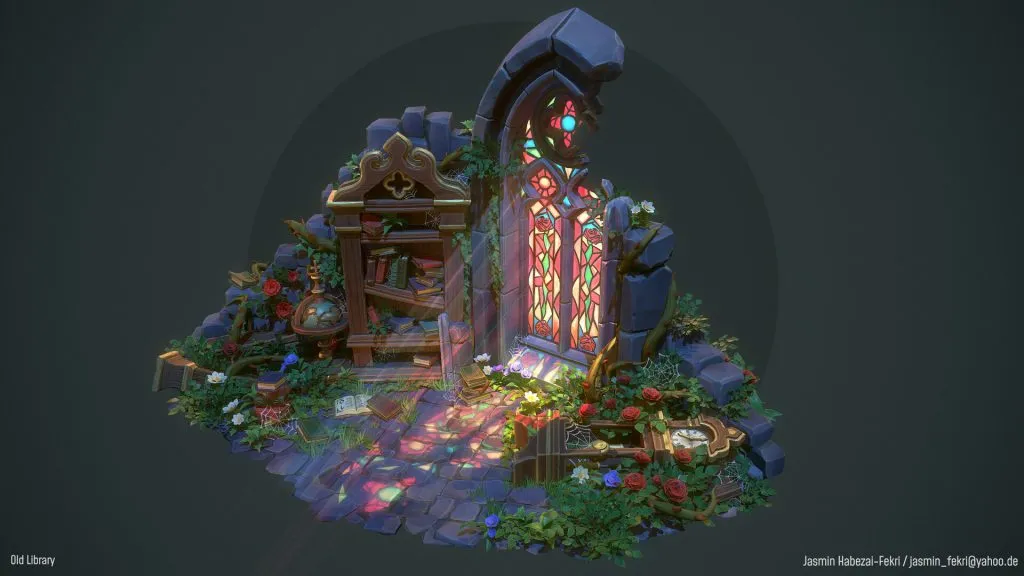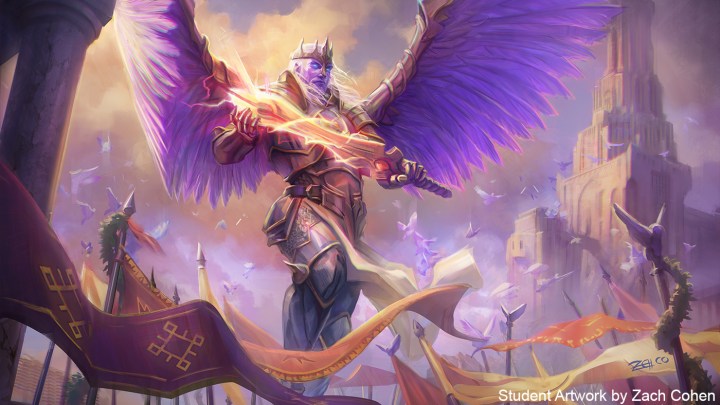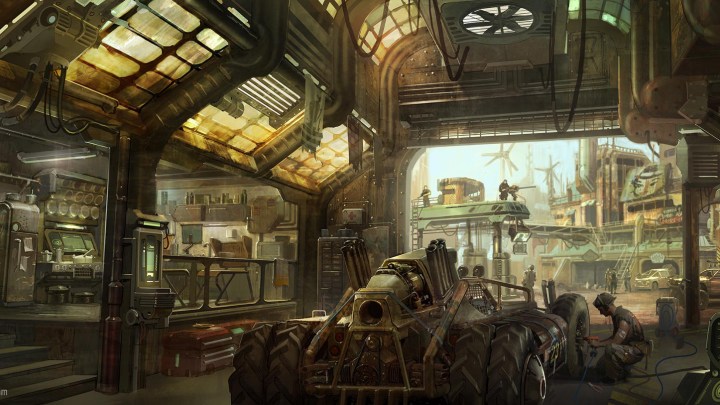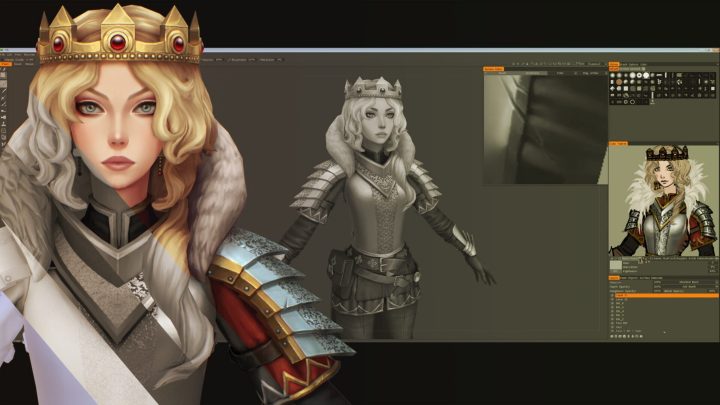Creating a Hand-painted Diorama in Blender with Jasmin Habezai-Fekri
On ArtStation Learning, Jasmin Habezai-Fekri breaks down her process for creating small hand-painted dioramas using Blender. The course covers the modeling, UVing, texturing, and lighting of the scene.
 Jasmin Habezai-Fekri is a 3D Environment Artist currently freelancing in the games industry and participating in the Sketchfab Master’s program. While attending university in Germany, she interned at Square Enix Montreal working on unannounced projects. She has a strong focus on stylized props with hand-painted textures, which she showcased in ArtStation’s Legend of King Arthur Challenge, where she earned first place in her category.
Jasmin Habezai-Fekri is a 3D Environment Artist currently freelancing in the games industry and participating in the Sketchfab Master’s program. While attending university in Germany, she interned at Square Enix Montreal working on unannounced projects. She has a strong focus on stylized props with hand-painted textures, which she showcased in ArtStation’s Legend of King Arthur Challenge, where she earned first place in her category.
Behind the course:
Over the years, I’ve been getting various questions about my way of approaching hand-painted models and what my workflow looks like. This course is for anyone who wants to get an overview of the process of creating a small diorama, including the different stages such as ideation, modeling, UVing, texturing, and the final presentation. The majority of these things will be done within Blender, presenting the range of features it has to offer when working on stylized 3D projects.
Blender has been the main software I’ve been using since I started learning 3D in early 2017. Being a total beginner in anything related to 3D and a first-year university student, I was very excited that I was able to dive into 3D without spending hundreds of dollars on various software packages. With the sheer amount of resources available across the internet, I was able to learn Blender’s in and outs pretty quickly.
What I was most interested in from the start were hand-painting 3D models. Having a strong interest in 2D, I wanted to be able to merge that with my newly found passion for 3D. However, I perceived it as very time consuming to constantly swap between 2D painting programs and Blender, wondering if I could speed up my workflow in any way. Once I discovered the texture-painting options inside Blender, I was instantly hooked and kept honing my painting and modeling skills. What I enjoyed most about it was that I could stay inside Blender for the majority of the asset creation, making it very accessible especially for beginners.
Another aspect I was excited to touch upon with this course is the role that lighting can play in hand-painted scenes. If done well, they can really enhance a scene and bring more attention to the painted details. I’ve been experimenting with this a lot in the past, making lighting a scene one of my favorite aspects of compositing a scene.
Most memorable learning experience:
When I started learning 3D, I was absolutely amazed by how accessible it was to learn a wide range of skills without having any prior knowledge in the field. Once I got into university, I realized that my preferred way of studying and acquiring new skills was loosely following tutorials and apply that knowledge onto my own projects.
Step by step courses are essential for forming foundational skills, but being able to apply learnings from other artists onto my own projects to improve them was the most rewarding experience whenever I discovered a new technique. I also started the habit of setting myself a little learning goal with every new project I begin, focusing on expanding my skills in one area. Personally, I get the best results with this type of goal in mind, giving me a playground to experiment and see how I can tackle the “unknown”.
1 piece of advice:
Create art that you are truly interested in. Don’t create art just because you think that’s what is currently “on trend” or what others want to see from you. Social media has been a blessing and a curse in this way. We see so much art every day that it can create a mindset of producing art quickly and tailoring it towards what is popular or gets more social recognition from others. However, this mindset isn’t healthy in the long run. Work on projects that make you excited and that excitement and passion will be visible in the end result too.
Artistic process:
I work in a very organic way, where I change and adjust the model, textures, composition, and lighting almost simultaneously all the time. Swapping between each part of the project keeps my mind active, especially when I get stuck on one of the other aspects. I start doing this whenever I reach the texturing phase. As soon as I add new colors or details to a prop, I instantly check it within the engine and see how my lighting interacts with the changes I did.
Seeing the asset in the context of the environment makes it easier to gauge what details are necessary or need to be removed. It also gives me the opportunity to keep an open mind to go into different directions within a project while also keeping my motivation high.
ArtStation Learning courses are included in all ArtStation premium subscriptions. Find out more >
See more of Jasmin’s work here.
